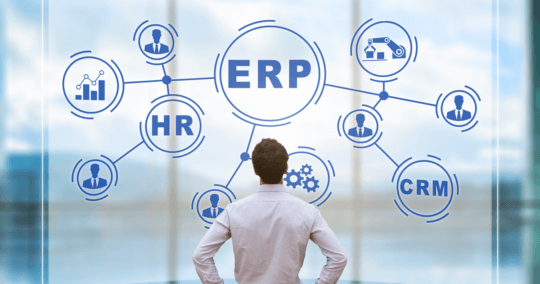SEEBURGER 2020 – Digitization Trends and Evergreens

Digitization has received a huge boost from the COVID 19 pandemic in 2020. What impact will this have on integration topics such as APIs, MFT, EDI and e-invoicing? Have digitization trends such as blockchain, Big Data and iPaaS taken hold? What challenges does the finance industry face, and what digital solutions have driven the machinery and equipment industry forward in 2020? In this annual review, we take a look at the most important trends and developments that have involved SEEBURGER in 2020.
APIs were a hot topic in 2020 and they will remain so in the future. The ongoing digitization of enterprises and the increasing emergence of digital ecosystems are forcing companies to finally address the integration of legacy systems into modern IT landscapes. Currently, it is mainly old economy companies that are driving connectivity via APIs to databases, ERP applications, SCM and CRM systems because they want to offer their customers improved digital services. Hybrid integration platforms are particularly suitable for this purpose. On the one hand, they facilitate API integration with back-end legacy systems and, on the other, they enable API management, a topic that is often underestimated by business decision-makers. This is because the integration of legacy systems is only one of many possible API scenarios.
The risk that implementing a multitude of API scenarios will sooner or later lead to a confusing and chaotic API ‘spaghetti’ scenario is high. The consequences can be drastic. The very idea that uncontrolled access to APIs could be the gateway to uncontrolled access to the company’s internal IT infrastructure often causes nightmares for the C-level of a company, which professional API management can prevent. So in any case, it will still be worthwhile in 2021 to drive API integration and API management forward in the enterprise.
The often inadequate security of large file transfers also has considerable potential to fuel nightmares. Even a task as seemingly simple as sending a large file from A to B can pose major challenges to an organization, even today. Our infographic about the everyday challenges of transferring data files can help you playfully figure out at what point in the evolution of managed file transfer you are right now. Do you already have a strategy for 2021 that includes managed file transfer? Given the ever-increasing threat of cybercrime, the increasingly stringent requirements for policy compliance, and the growing need to be able to transfer large files in the giga and terabyte range, it’s certainly reassuring to have a digital MFT solution that integrates with whatever APIs and cloud solutions you have in place in-house.
In B2B, many companies exchange business documents via EDI. This makes the entire supply chain more efficient. But time and again, changes in the digital world pose new challenges for the use of EDI solutions. EDI message standards evolve, framework conditions change, or trading partners require more flexibility in integration due to different technical requirements. SEEBURGER masters all these challenges based on more than three decades of experience in the implementation of EDI solutions.
EDI is a proven solution for the automated and seamless exchange of data and documents between trading parties that maintain long-term business relationships within a supply chain. But what if trading partners are to be connected electronically at short notice for deliveries that are only made once or twice? Isn’t an EDI connection in such cases far too costly and tedious? Could blockchain be a solution here and even replace EDI in the end? This thought is not so far-fetched, because the control of the flow of goods requires many features that blockchain already offers, such as the interconnection of complex applications.
Blockchains can be quickly expanded to include new peers, and the frameworks already comes with many system components that can be used to create distributed applications and marketplaces quickly and easily. In addition, aspects such as the immutability and irreversibility of transactions make blockchain technology enormously secure and product piracy, counterfeiting or illegal trading almost impossible. Nevertheless, blockchain is definitely not suitable for completely replacing EDI in a supply chain. If, for example, data is sent between two trading parties via a common protocol, or many suppliers need to be permanently connected to a trading partner, EDI is definitely the superior technology. However, there will certainly be a few niches in the future where blockchain will play a role in a supply chain.
Speaking of trends – Big Data is a keyword that has become ubiquitous not just since 2020, because it is becoming more and more relevant in everyday business to collect, make available and intelligently use the data that is accumulating en masse in all areas. Almost everything has something to do with Big Data – even bread rolls! Don’t believe me? Read our blog article! SEEBURGER Research is working on a number of projects to aggregate data and make it usable, for example for forecasting scenarios. How we also use machine learning and AI for this is described there on the basis of an exciting project – and by the way, you will even learn what role the bread rolls play in this. In any case, the basic prerequisite is that existing data is integrated and thus made reusable.
Another keyword you couldn’t miss in 2020 is iPaaS, or Integration Platform as a Service. We know at least 5 good reasons why iPaaS should be at the heart of your cloud strategy. Fundamentally, this is because iPaaS is a key building block of hybrid integration platforms. And these are increasingly coming into focus due to the wide range of integration requirements. iPaaS helps you ensure your business continuity in complex integration projects, orchestrate application integration quickly and easily, and ensure your multi-client capability and scalability. iPaaS also helps increase automation and ensures that you can use your existing systems longer. So if you’re in the process of fine-tuning your cloud strategy for 2021, be sure to take a closer look at iPaaS.
Let’s stay with cloud services for a moment: The Peppol network, which originally came from the field of eProcurement, has evolved considerably in 2020 and is currently in the process of establishing a model for international e-Invoicing under the name PINT (Peppol Model for International E-Invoicing). Companies currently working on a global e-invoicing strategy are often overwhelmed with this complex task. Who can manage to keep track of all global e-invoicing regulations? Peppol has become the greatest common denominator in global e-invoicing and is well on its way to meeting all the key requirements for global e-invoicing. The SEEBURGER cloud service Peppol Access Point enables fast connection to the Peppol network as a simple plug-and-play service.
Speaking of e-invoicing … the year 2020 has brought some new obligations for state authorities and German federal contractors. For example, electronic invoicing is mandatory in public administration as of this year. Are you also facing the challenge of learning the requirements for the individual federal states and having to implement them in IT terms? Then XRechnung and ZUGFeRD should no longer be unfamiliar to you. However, you should definitely be aware of the notes on the terms of use of the incoming invoice platforms of the government contracting authorities, because federalism in Germany still favors a large number of inconsistent legal requirements. So be prepared to have to react flexibly and at short notice to changes in the general conditions.
Bridging the gap from e-invoicing to banking is an obvious choice. Especially in 2020, a lot has happened in this industry and we asked ourselves, ‘What is the future of digital payments?’ New players are mushrooming, as are alternative payment methods. Banks are forming strategic partnerships with technology companies to stay competitive, and the surge in e-commerce due to the COVID 19 pandemic in 2020 is driving the proliferation of contactless payment methods. This triumph of digital payments is increasing the need for regulation and compliance rules, and growing interoperability between banks is driving initiatives such as Open Banking.
In general, the financial industry is strongly affected by the accelerating digital transformation and is urgently looking for future-proof solutions for digital payments. To this end, we have compiled four best practices to help banks supercharge their payments modernization efforts. The focus here is on flexibility and speed in the provision of new services, the finite resource of ‘humans’ in their function as developers, increasing regulatory pressure, and the question of cost-effective integration concepts in the form of cloud and platform solutions.
Digital platform economy in mechanical and plant engineering have also become much more important in 2020. Data-centric platforms provide infrastructures for exchanging, analyzing and evaluating data, for example, and thus enable the development of new, data-based business models and services. Transaction-based platforms, on the other hand, are used for exchange and trade. Examples of this second category of platforms are B2B marketplaces, retail and manufacturing platforms, supply chain/logistics and networking platforms. Information security in data exchange and integration is essential in the implementation of digital transformation in mechanical and plant engineering. As with all integration projects, information security is the top priority here as well!
As you can see, the year 2020 was full of rapid developments, especially in the IT sector. We are grateful that we were able to become a #businessaccelerator for many companies with our expertise and to support them in keeping pace with the swift pace of digital transformation. With all the developments that have been triggered and fueled this year, I am anticipating 2021 with positive expectations. The entire SEEBURGER team is already looking forward to driving our customers’ success with our integration solutions ‘made in Germany’.
Thank you for your message
We appreciate your interest in SEEBURGER
Get in contact with us:
Please enter details about your project in the message section so we can direct your inquiry to the right consultant.
Written by: Dr. Martin Kuntz
Dr. Martin Kuntz has worked for SEEBURGER since 2000, and is a member of the Board of Directors since 2015. His strengths lie in the Cloud, business applications, and the digitalization of specialty and technical business processes. He has degrees in physics and business administration. Earlier, he worked for several years in the Simulation department of the Karlsruhe Institute for Technology and for Airbus subsidiary Airbus Defence and Space.





